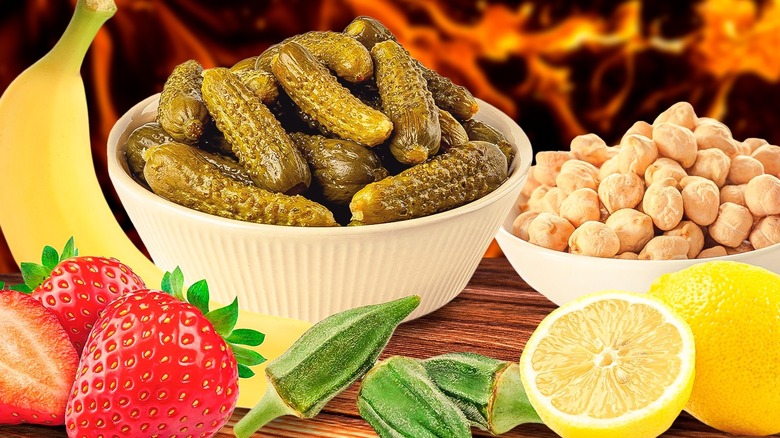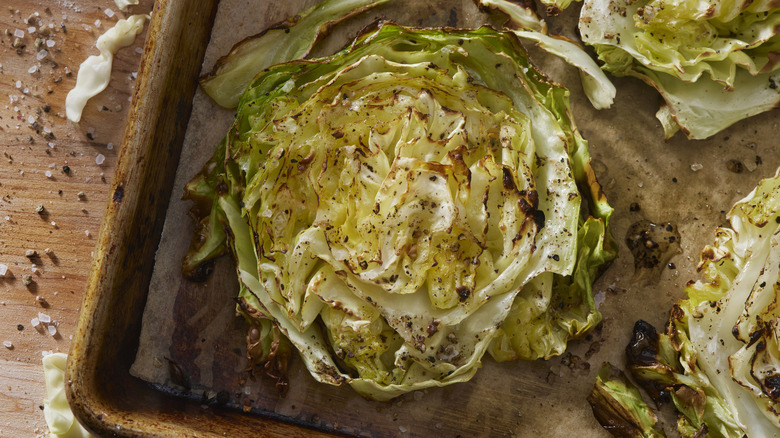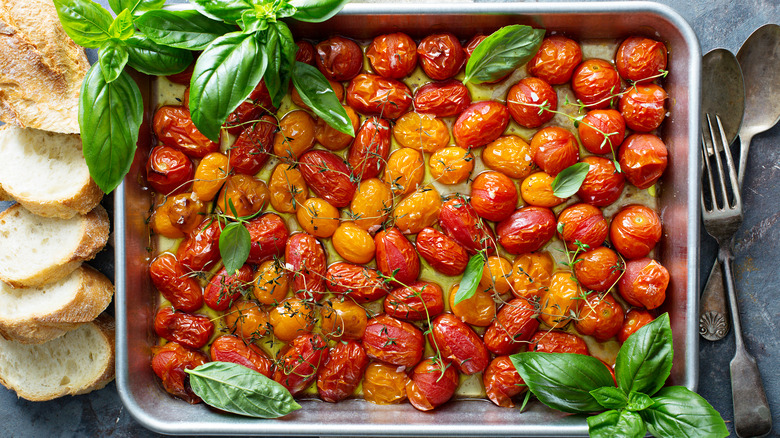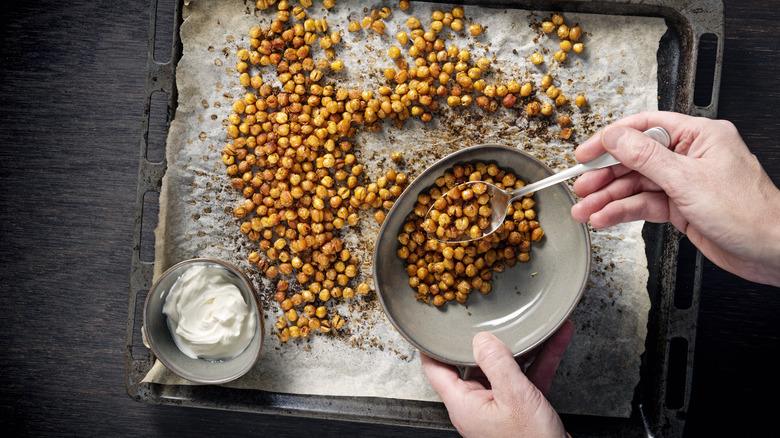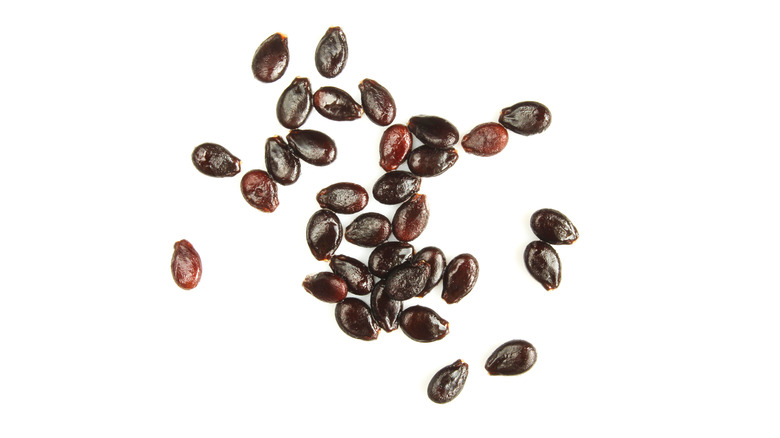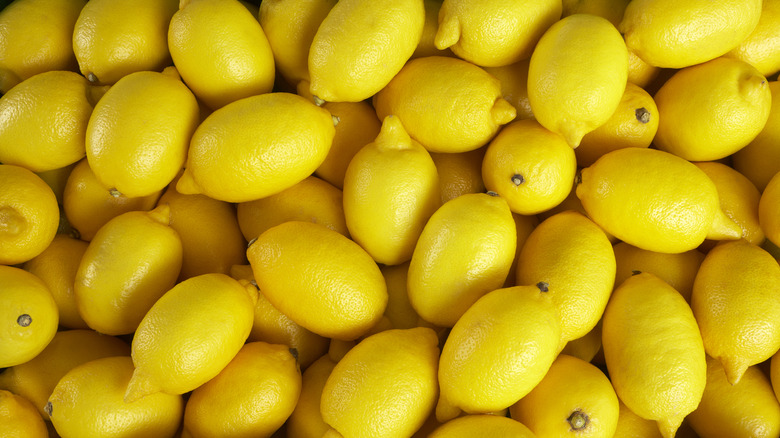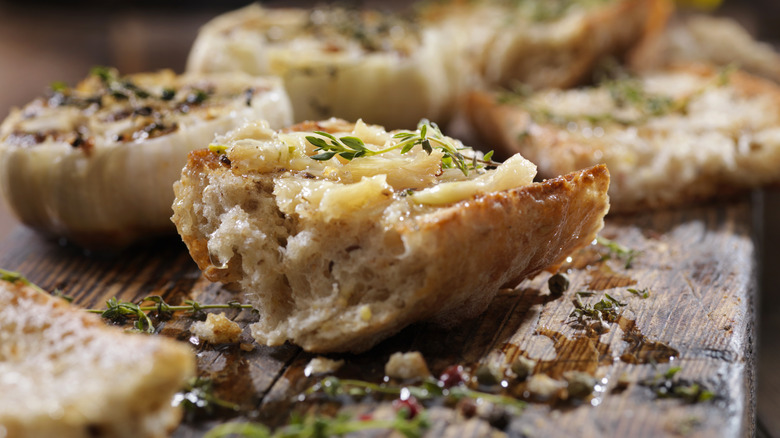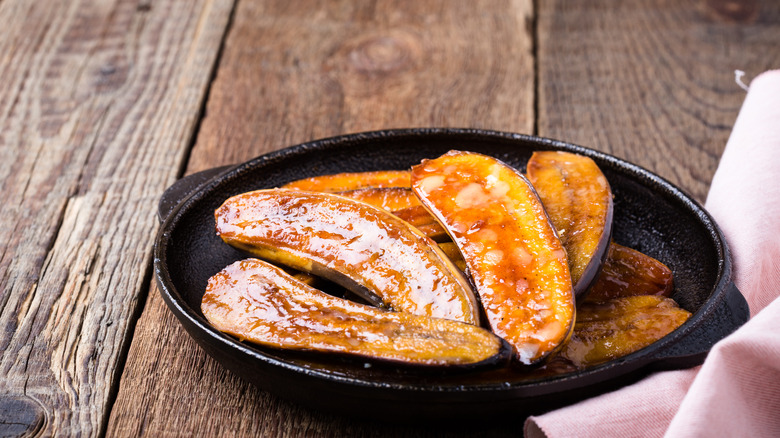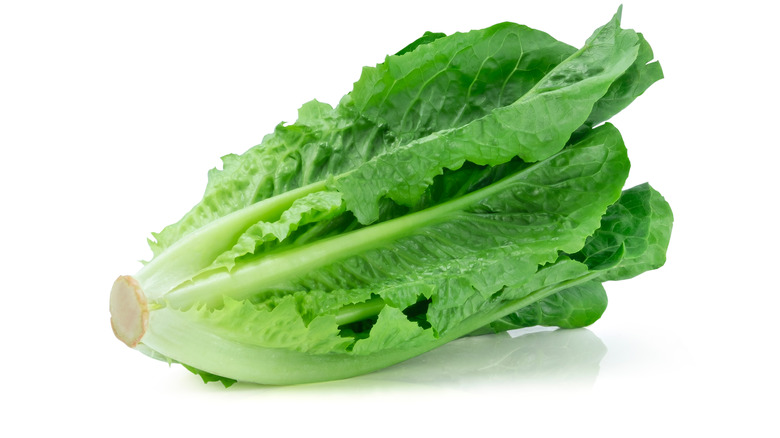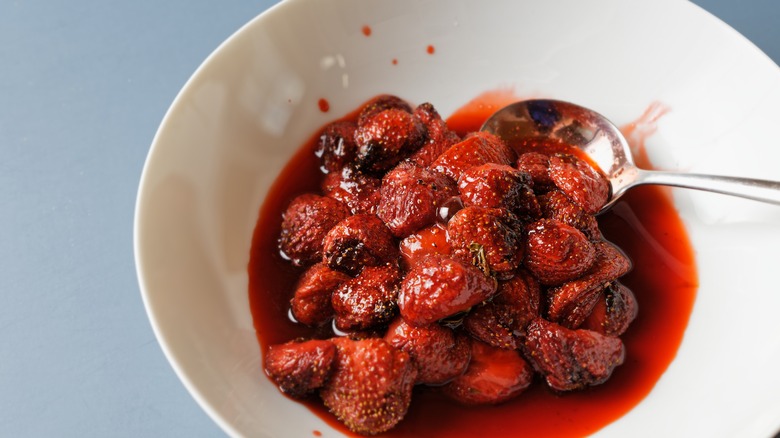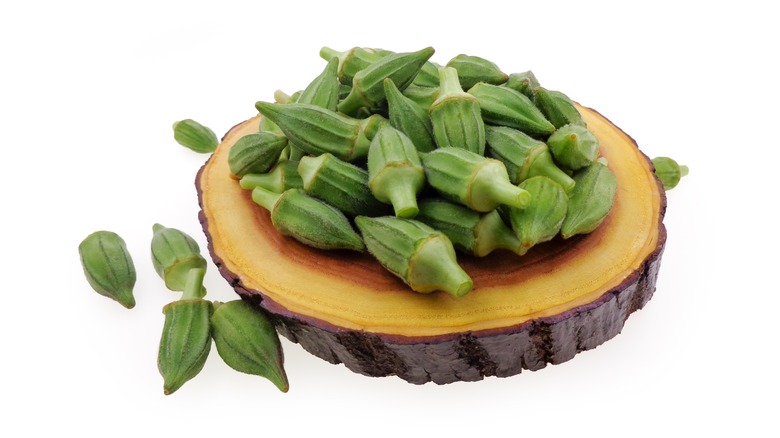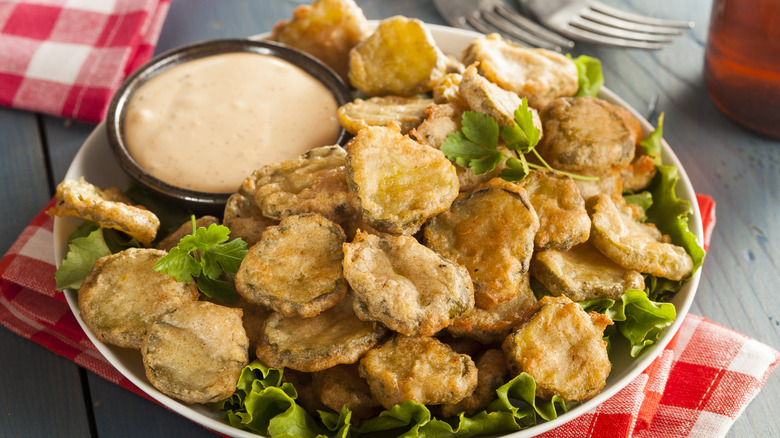12 Overlooked Ingredients You Need To Start Roasting
Roasting is the gold standard cooking method for many foods. It's easy to do and produces the most delicious results. Simply place your food of choice in a roasting pan or on a baking sheet, pop it into a hot oven, and wait for the magic to happen.
Roasting is the process of cooking food by surrounding it with hot air in a closed environment. It uses dry heat with no steam or cooking liquid required. Roasting has evolved from cooking foods over an open flame campfire style to cooking them uncovered on a rack in your oven. It caramelizes the natural sugars in food, bringing out their sweetness and creating a depth of flavor that can't be matched. Roasted foods are beautifully browned and crisp on the outside and moist and tender on the inside. It is a simple, go-to method for getting a tasty meal on the table with minimal preparation. Your go-to spices and a bit of olive oil are usually the only items necessary.
Perfectly roasted chicken is likely the first thing that comes to mind when roasting comes up, along with other favorites like crispy roasted potatoes or roasted asparagus. If you're willing to think outside the culinary box and embrace some new tastes and textures, you'll find there are scores of other foods, everything from lettuce to fruit, that can also benefit from a good roast.
Here are 12 overlooked foods you should start roasting immediately.
Cabbage
Roasting is probably not the first cooking technique you consider when you pick up a head of cabbage at the grocery store. Most cabbage recipes call for this cruciferous vegetable to be fried, braised, or even blanched, stuffed, and baked. Sauerkraut lovers don't have to cook cabbage at all. It's shredded and fermented for days until it reaches the desired texture.
Roasting brings the cabbage's flavor to life. According to Tasting Table recipe developer Hayley MacLean, roasting cabbage "brings out a natural sweetness in the cabbage while reducing the bitter notes in the final dish." Cabbage roasts up with crispy edges, a soft, tender center, and a mellow flavor that balances the vegetable's natural bitterness, traits other cooking methods can't create.
The first step in roasting a head of cabbage is to cut the cabbage into wedges. Smaller pieces create more surface area and promote even cooking. Be sure to leave the cabbage core in place as you cut it. The core will help hold the wedges together, and when cooked, it transforms into a flavorful, fork-tender center. Place the cabbage wedges in a single layer on a sheet tray lined with foil and toss them with a little olive oil, salt, pepper, and your favorite herbs and spices until the wedges are evenly coated. Roast the cabbage in a 500 F oven for 10 minutes. Flip the cabbage and continue cooking it for another 10 minutes until it's lightly browned and tender.
Cherry tomatoes
Cherry tomatoes are a delight of spring and summer. They're tiny bites of sweetness that are fantastic additions to salads, pasta, and more. Roasting cherry tomatoes gives additional ways to enjoy them, and it's an excellent way to put overripe or imperfect cherry tomatoes to use.
Roasting concentrates the tomatoes' flavor and sweetness. The heat causes the cherry tomatoes to burst as they're cooked. They release their juices and cook down into the most amazing, jammy sauce. You can prick your tomatoes with a fork before roasting them to prevent the bursting juices from spattering inside your oven.
To roast cherry tomatoes, toss the tomatoes with olive oil, salt, pepper, and any other spices that will suit your dish. Place the tomatoes on a baking sheet and pop them into a 400 F oven for 40 minutes. The goal is tomatoes that are slightly charred and soft, almost jam-like in consistency. You can blend the roasted tomatoes into a flavorful sauce or leave them whole and pile them on top of your favorite pasta for an easy meal. Serving on crostini or spread generously on bread to take your sandwiches to another level. If you love tomato soup, you'll love it when it's made with tomatoes roasted with garlic, onion, and herbs.
Garbanzo beans
Garbanzo beans, aka chickpeas, are what hummus is made of. Add them to a food processor with olive oil, tahini, lemon juice, salt, and pepper, and a few pulses later you have a creamy, mouth-watering dip for pita chips or veggies. While hummus might be what garbanzo beans are best known for, they are equally delectable in many other recipes like savory soups, stews, and hearty salads.
As much as we love these traditional uses for garbanzo beans, roasting them converts them into a crunchy snack with a powerful protein punch. Garbanzo beans are also a great source of fiber, making them an excellent substitute for snacks like potato chips.
To roast the chickpeas, drain the beans and give them a rinse. Pat them dry completely. Excess moisture will prevent them from crisping when they're cooked. Drizzle the dry chickpeas with olive oil and season them generously with salt and pepper. For more flavor, you can add seasonings like garlic powder, paprika, cumin, or chili powder. Add a drizzle of honey or maple syrup for a slightly sweet option. Place the seasoned garbanzo beans on a sheet tray coated in nonstick spray and roast them at 425 F for 15 to 30 minutes, depending on how crispy you like your roasted beans.
Roasted chickpeas are incredibly versatile. You can add them to salads for extra crunch or enjoy them on their own as a snack.
Watermelon seeds
Biting into a cold slice of juicy, sweet watermelon is a core summer memory for many of us. Chewing your way around the watermelon seeds was the only downside to this warm weather ritual — which also included the fictional parental warning that swallowing the seeds would cause them to sprout in your stomach. Needless to say, watermelon seeds won't turn your stomach into a garden, and they are safe to eat, but why would you want to? Pulled straight from the watermelon, the seeds are chewy and bland, but roasting morphs the seeds into crunchy bites of nutty goodness.
Watermelon seeds are excellent sources of iron, magnesium, zinc, and a host of other vitamins and minerals that increase energy levels, lower cholesterol, and boost your immune system. The seeds also contain both monounsaturated and polyunsaturated fats, good fats that support heart health.
You can roast watermelon seeds by rinsing them thoroughly and patting them dry. Choose only the black seeds, which are mature, instead of the softer white seeds. Pat the seeds completely dry and drizzle them lightly with olive oil, just enough to coat them. Sprinkle them with salt, pepper, and any other seasonings you love, and spread them evenly on a baking sheet in one layer. Place the baking sheet in an oven preheated to 325 F for 15 minutes. Store the roasted seeds in an airtight container or bag and sprinkle them on salads, scatter them on soups, or have them as a snack.
Lemons
Lemons have many uses in the kitchen, and their bright, citrusy flavor enhances both sweet and savory dishes. Whether it's a wedge nestled next to your seafood entree on a restaurant plate, a generous squeeze added to a marinade or cocktail, or a slice perched on the rim of a water glass, lemons can be used as a garnish, meat tenderizer, and to balance flavors in dishes. They are the star ingredient in recipes ranging from roasted potatoes to lemon bars and the ever-popular lemon chicken.
Lemons need no improvement, but roasting them is a flavor game-changer. The sugar in lemons caramelizes and browns when the fruit is roasted. That caramelization causes major changes in lemons. It adds a layer of complexity, intensifies, and mellows its flavor all at the same time.
There are two methods of roasting lemons. You can slice the fruit in half and place each half on a baking sheet or oven-safe dish, cut side down. Place the lemons in a 400 F oven until the lemons are slightly charred at the edges. You can also peel the lemons before roasting them. Separate the sections, discard as much of the white pith as possible, and toss them with olive oil and any seasonings you choose. Place the lemons in a baking dish or sheet tray and roast them at 400 F for 40 minutes until the segments just begin to blister.
Use roasted lemons to garnish grains and proteins or to make perfectly sweet lemonade.
Bread
If you're not roasting your bread, you are missing out on a simple way to add immense flavor to everything from roast chicken to French toast. Don't confuse roasting with toasting. Toasted bread is cooked at a high temperature for a short time, while roasted bread is cooked at a lower temperature for longer. Toasting gives you crisp bread all the way through. Roasted bread has a crispy exterior and moist interior.
Roasted bread is typically used in recipes where a liquid is in use, so it's essential to roast bread that is sturdy, like ciabatta, a baguette, or sourdough. As bread ages, it loses moisture and becomes brittle, making it easy for fragile breads, like sandwich bread, to fall apart when the liquid is introduced. The heat from roasting softens the bread, and thinner versions are more likely to crumble when roasted. Roasted bread also makes the best French toast. Place the sliced bread in a 300 F oven for eight minutes per side to create the perfect crunchy bread to dip or soak in your custard.
Bananas
Bananas take center stage in recipes like banana cream pie and banana pudding, and the whole world mashed their ripened bananas into loaf after loaf of banana bread at the height of the pandemic. If you're up for an off-the-beaten-path way to enjoy bananas, try roasting them.
Roasting bananas is simple. Leave their peels intact and give them a rinse. It's important to pat the banana peels completely dry because excess moisture will cause them to steam instead of roast. Place the dry bananas on a baking sheet and roast them in a 350 F oven for 10 to 15 minutes for soft, gooey bananas. You can also roast them at a lower temperature, 300 F, for 15 to 20 minutes for smooth and soft bananas. Cooking the bananas for longer will result in bananas that are chewy and leathery.
You can add roasted bananas to any baked goods that call for overripe bananas. The sweeter, caramel-like flavor will add an intense and rich banana flavor and fluffy texture to everything from pancakes to banana bread. If you want to try something new, add roasted bananas to your sweet potato casserole. Mash the bananas into the sweet potatoes, and your casserole will bake up light and fluffy with an added note of caramelized sweetness.
Romaine lettuce
Cooking leafy greens may sound like an unconventional idea, but it isn't new. Kale chips are made by roasting kale leaves. Sauteed spinach is a quick and easy side dish, and stir-fries are better when bok choy is part of your vegetable mix. Grilled Caesar salads, made with romaine lettuce that's been grilled to a light char, are all the rage on restaurant menus. Roasting your romaine lettuce will make your salads epic.
Roasting romaine lettuce alters both the texture and the taste of the lettuce. It still maintains its telltale crunch, but the charred edges are tender, and its crisp, light taste benefits from the smokiness roasting imparts.
To roast romaine lettuce, cut the heads in half lengthwise and rinse them thoroughly, especially between the leaves where dirt can easily hide. Place the lettuce cut side down on paper towels and pat them completely dry. Wet leaves will become soggy and lose their crispness. Place dry lettuce cut side down on a baking sheet lightly coated with nonstick spray or lined with parchment or foil. Drizzle it lightly with olive oil and season it with salt and pepper. Roast the lettuce in a 400 F oven until the lettuce begins to brown and is slightly wilted on the edges.
Use your roasted romaine to make an elevated Caesar salad or any other recipe that calls for romaine lettuce. Your tastebuds will thank you.
Strawberies
Strawberries are terrific in everything from salads to desserts. They're a fruit that can be used in both sweet and savory recipes. They brighten salads and lend their trademark sweetness to pies and cobblers, creamy ice cream, and fruity cocktails.
Roasting strawberries unlocks a new level of flavor, turning the bright taste into a sweeter, richer flavor. It's a great way to make the most of off-season berries, which may not be at peak flavor.
There are two schools of thought on roasting strawberries, and both yield delicious results. Chef Michelle Polzine recommends roasting your berries low and slow in a 200 F oven for 2 ½ hours. Wash fresh berries and pat them dry. Remove the hull from the berries and cut large ones in half. Toss the berries in sugar and place them in a glass baking before roasting. The low and slow method gives the sugars in the strawberries and the sugar the berries are tossed in before roasting plenty of time to caramelize and develop an intense flavor.
Roasting strawberries at a higher temperature for a shorter time is another option. After rinsing and drying them, toss the strawberries with sugar and place them on a baking sheet lined with parchment. Alternatively, roast them at 400 F for 15-20 minutes. These strawberries will be bubbly, soft, and not quite as jammy as the slow-roasted version, but equally delicious.
Both can be used to top ice cream or cake or blended into homemade ice cream.
Okra
Okra has a bad reputation. Technically a fruit, the small green pods get vegetable treatment in the kitchen and notoriety for a slimy texture when cooked. The culprit is a gelatinous liquid called mucilage that is naturally present in okra. Mucilage is why okra is a popular choice to add to soups and stews, like gumbo, which benefits from its capacity as a thickening agent.
When okra is cooked, the heat encourages it to release the mucilage, which gives the okra a slimy texture. The high temperatures used to roast okra dries up the mucilage, so only a dry, crisp texture remains. Air frying is a great way to roast okra. The hot, dry heat crisps the okra, turning it into crunchy, tasty bites.
For best results, choose smaller okra pods for roasting. Larger pods are tough and sinewy, while the smaller pieces will end up crispy but tender. Wash the okra and make sure it's dry before trimming them. To trim okra, cut off the ends and slice each pod in half lengthwise. You can leave smaller pods intact. Toss the okra with olive oil and seasonings, then spread it in one even layer on a baking sheet. Roast the okra at 425 F until it's fork-tender, crispy, and brown on the edges, about 20 to 25 minutes.
Pickles
Fried pickles have been a thing across the South for years. Pickles are sliced, coated in breadcrumbs, seasonings, and even cheese, and then fried to perfection. They're served as a snack or a side with sauces for dipping—the breadcrumbs and spices mellow pickles' tangy, salty taste for a wonderful blend of flavors.
If frying's not your thing, you can enjoy these delectable savory bites without heating up a pot of oil. Roasting the pickles will give you the same result: crispy bits of pickle with a crunchy coating. Pickles' sour, briny flavor is complemented by the seasonings you use, so consider spices with big flavors like garlic powder, paprika, chili powder, or cayenne for a spicy version.
Preheat your oven to 425 F while you prep the pickles. To roast pickles, pat your slices completely dry. Moisture is the enemy when roasting in general, but especially when roasting foods with a coating. For the crispiest roasted pickles, use the FEB (flour, egg, breadcrumb) method to coat the pickles. Dredge each pickle slice in flour and dip it in the egg before coating it in breadcrumbs. Place the slices on a baking sheet lined with parchment or lightly coated with nonstick spray and roast them until they are crisp and brown — 10-15 minutes. For a cheesy roasted pickle, sprinkle your favorite cheese on top of and underneath each pickle slice. Roast them until the cheese begins to brown on the edges, about 15 minutes.
Pears
Pears often play second fiddle to apples as far as fall fruits go, but they are excellent choices for roasting. Like apples, pears can take center stage in pies and tarts and even add a delightful crunch to sandwiches. Unlike apples, when cooking pears, you can skip peeling them. Their skin becomes even more tender when roasted.
Roasting pears is simple. Rinse the pears and pat them dry. You can cut them in half lengthwise, into wedges, or slice them thickly. Remove the core no matter how you slice them. It will remain tough even after being cooked. Thin slices will fall apart when roasted. Place the pears on a baking sheet lined with parchment and drizzle them lightly with olive oil. Also, consider seasoning your pears with other flavors like honey, balsamic vinegar, herbs, and spices. Roast pear slices at 400 F for 20 minutes or until the pears are golden brown. Cook pears cut into larger pieces like halves or wedges longer and at a lower temperature. Roast them at 350 F for 30 minutes.
It's essential to choose pears that are ripe but not too soft. Soft pears won't survive the high temperatures of roasting. Roasted pears are fantastic on their own but make a fabulous addition to salads and vegetable side dishes. Serve them with a scoop of your favorite ice cream, add them to your cakes and pies, or roast them along with vegetables for a sweet and savory side dish.
